#valeries artbook
Text

Image from the official Pathfinder: Kingmaker artbook.
Imagine the beautiful timeline where we got Valerie 1....
#Pfkm#pfkm valerie#valerie pfkm#sir valerie#To be fair it wouldve made it even more egregious that she is straight#To be fair in a different direction--she could have very short hair and be queer. Honestly thats my(<-butch) desired outcome.
4 notes
·
View notes
Note
I need to know more about your glass sanctuary ship with hanako👀
jkdljg;sdjsàl *giggle kicking my feet twirling my hair*
okay sorry bout that not every day i get ask about my 0 braincell ship so
I seriously don't know where to start...? Because this ship is tied to Valerie's backstory and explaining all of that would make me look like I'm infodumping so 😭😭😭
Tldr version would be that Valerie was kidnapped and sold to Japan. The gang bought a bunch of kids (including Val) to make them do petty crimes. Eventually Valerie was picked for a job of stealing weapon blueprint from an Arasaka facility in Tokyo. She succeeded but got captured by Shintaro Takayama (Saburo's bodyguard) as Saburo visited the facility unexpectedly. Instead of being killed, Valerie was taken in to become Shintaro's protegee, and that was how she ended up becoming Hanako's bodyguard, plus part time executioner for those who plotted against Arasaka, until 2072 when she "left" Arasaka to got back to NC.
The main themes for this couple are contrast and gap.
There is the class gap, which is obvious because Valerie was simply a bodyguard, while Hanako was the treasured daughter of the Emperor
The age gap: Valerie was 14 when she officially became Hanako's personal bodyguard, so there was this 54 years gap between them. It contradicts to their roles, which leads us to the next point
The role contrast: Valerie was Hanako's protector; however, because of their difference in ages, most of the time Hanako treated Valerie as if she was a child, which was technically not wrong. But Valerie had been taught that she should never concern Hanako with such things, so she felt guilty, and all at the same time, because of her fucked up time in the gang and harsh training by Shintaro, she somewhat craved having someone cares for her the way Hanako did.
Expanding on the role contrast and age gap, Valerie was young, but she had to coat her hands with blood in order to serve the Arasaka; at the age where she should able to keep her innocence, killing instead became a familiar act with her. Hanako, on the other hand, was still in a glided cage at that age, having everything handed to her if her father allowed so. The young was not treated as young and the old was not treated as old; the young who had already lost everything and the old who still had everything. Valerie had to fight tooth and nail, risking her life to gain nothing for herself, while Hanako didn't even have to face the ugliness of the world to have power and wealth.
Ethereal and otherworldly, she has never had grime from the street besmirch her clothes or the imperfections of age or illness pock her body-the latest and greatest marvels of cosmetic engineering have always been at her back and call. Her entire essence is one of dissonance: age without aging, power without agency, family without real intimacy or trust.
The Official Artbook of Cyberpunk 2077, about Hanako Arasaka
Valerie was aware of how she was contributing in building Hanako's glass cage. She realized she had a hand in taking away the older woman's freedom, but she was blinded by duty and responsibility: she knew Hanako was capable of changing the whole world, but she was also scared that the cruel world, the very much same world that had broken Valerie would break her too.
They formed a translucent barrier around her, forcing her to stay in this suffocating bubble in the name of protection, all while she could thrive more and more and more if only she was given the chance.
our sanctuary in this broken world, chapter 3
In the current time of 2077, Valerie and Hanako's relationship has shifted to this complex stage of "we are both fucked right now but we are also busy pining each other": Valerie is dying, just lost her best friend, and prior to that was pushed off the corporate ladder which forced her to stay away from her family so that they wouldn't get mixed in her new life; Hanako just lost her father, and from their point of view at that time, her brother was very much planning to kill her. (Fun fact, Hanako died in every route except the Devil; however, Yorinobu never intended her death in all of those endings, but it happened either way.)
I chose glass sanctuary because I was impulsive it represents what Valerie and Hanako try to find in each other: a sanctuary amidst of this storm brewing out there. However, it was fragile, for that they were of two different worlds - their differences are what draw them together, but also what break them.
So yeah, that's what I can say for now...? I say I won't infodump but damn this is pretty much it either way lolol.
#ship: glass sanctuary#sorry for late reply ajsfkl;asj was busy as hell and ik the moment i sit down and write this i will enter a trance#cyberpunk 2077 v#valerie phan#hanako arasaka#cp2077#hanako x v#v x hanako#fun fact: the first draft of our sanctuary in this broken world was written in january 2021#fun fact 2: i actually written the ending first and i intend to stick with it
6 notes
·
View notes
Text
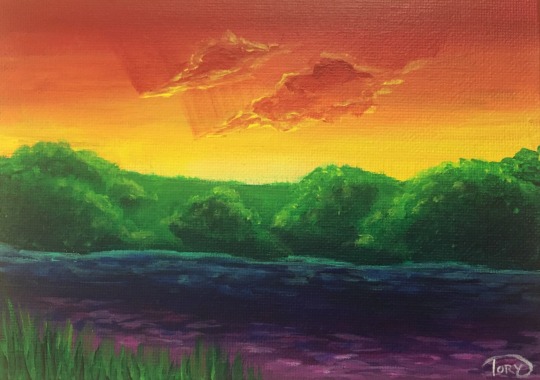
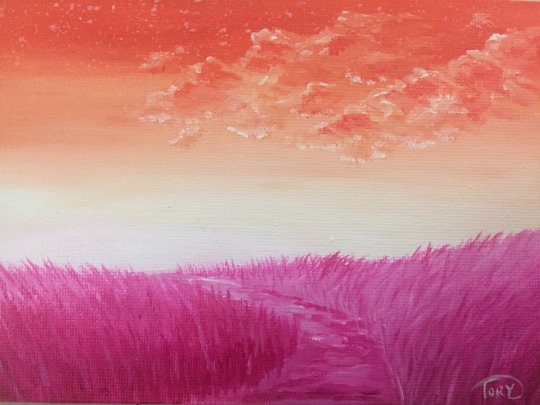






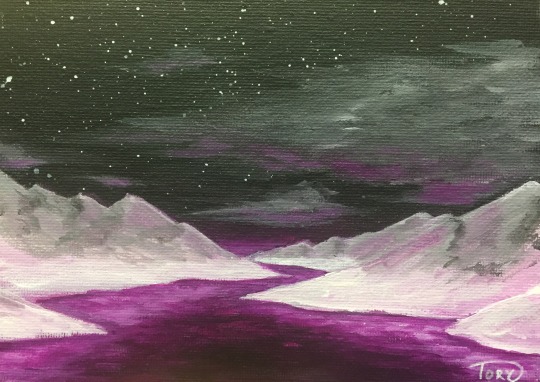

I wasn’t happy with the quality of the original pride landscapes... so I repainted all 10. Hope y’all like the new versions of disguised pride flags!
#i’ve been dead for like 100 years#i promise i’ll try to post more offten#i tried to make the colors truer to the flags#also these have more detail#once i start selling my work i’ll make prints#my art#paintings#acrylic paint#valeries artbook#valerietompson#artists on tumblr#pride#gay#lesbian#bi#bisexual#pan#pansexual#trans#transgender#genderqueer#gender fluid#nonbinary#non binary#ace#asexual#aro#aromantic#landsapes#colorful
40K notes
·
View notes
Text

Inspired by @valeries-artbook series, because I wanted to try my new pens without thinking about content (and also because we're all gay and it looked cool)
As you can guess, I had no purple, only bright pink and blue, so... yeah. I'm still pretty happy with how this turned out!
4 notes
·
View notes
Text
“Visions from the Upside Down”-Stranger Things:Artbook Artists List
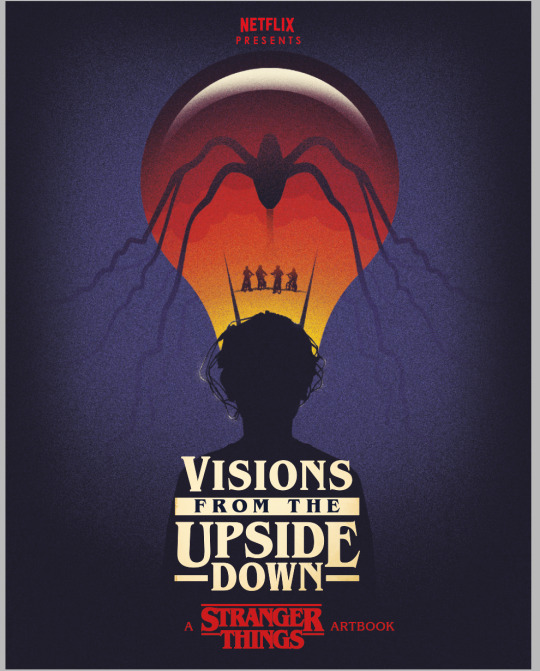
As we inch close to the release date of our latest and most amazing Artbook release to date, We wanted to post a list of all of the included artists in the project. I am including their Social media @nametags for Instagram (if they have an account there) so you can follow up on their amazing works outside of our new book.
Remember you can pre-order the book here:
Charles Adi @blackoutbrother
Brian Aldridge @aerosoulpro
Nick Allsop @nick_alsopp_art
Rafael Alvarez @alvarez_studio
Kwasi Amankwah @kwasi81
Stephen Andrade @stephen.andrade.7 (Facebook)
Orlando Arocena @mexifunk
Edgar Ascensao @edgar_asc
Dane Ault @monkeyminionpress
Noah Bailey @boyishdeathtribe
Giuseppe Balestra @artbygb
Mark Bell @markbellillustration
Angelina Benedetti @angelinabenedetti
Freya Betts @freyabettsart
Rick "dienzo" Blanco @dienzoart
Alejandro Blasi @alejandroblasi.art (Facebook)
Aaron Bolduc @alphaazieru
Alex Boniwell @erodingdesigns
Mark Borgions @handmade_monster
Bonnie Bozell @bbozellart
Michael Vincent Bramley @mvbramleyart
Matthew Brazier @matthew_brazier
Rio Burton @rioburton
Lin-Zy Busch @withlovelinzy
Matt Busch @matt_busch_instagram
Butcher Billy @thebutcherbilly
Sheila C @studiosheila
Carlos Cabaleiro @cabaleiroart
Chris Callahan @rgb_alpha
Josh Campbell @paybackpenguin
Daniel Campos @stalk_danielcampos
Kate Carleton @keelhaulkate
Simon Carpenter @simcarpe
Ryan Caskey @ryancaskeyillustration
Christa Cassano @christacassano
Justin Castaneda @whenuwerelittle
Victor Castro @victoroil
Lon Chan @lonchanillustrates
Alexander Cherepanov @cherepanov_inkart
Chogrin @chogrin
GMB Chomichuk @gmbchomichuk
Chris Chuckry @chrischuckry
Darren Coburn-James @asylumartz
Adam Cockerton @adamcockertonart
Joe Corroney @joecorroney
Carolyn Craggs @carriejc1983
Paul Cremin @paul_cremin_art
Ryan Crosby @rcillustration
Ronnie Crowther @ronniecrowtherart
Justin Currie @chasingartwork
Bob Dahlstrom @bobdahlstrom
Ted Dastick @teddastickjr (Twitter)
Jason Davies @jasondaviesart_
Neil Davies @neildaviesillustration1
Rich Davies @turksworks
Simon Delart @s2lart
Mike Diaz
Garrett Dix @garrett_dix_artist
Rodney Dollah @rodneydollah
Dug Nation @sketchymonsters
Matt Dunn @matthewdunnart
Roberto Duque @rad_pencils
Damian Edwardson @damianedwardsonart
Sarah Elkins @NeilaK20 (Twitter)
Don England @donaldengland_art
Nicole Falk @legendsofthefalk
Bastian Faulk @bastianfaulk
Jaimie Filer @jaimie_filer
Malcolm Fisher @mal_made
Francisco Flores @artofmetalhand
Jared Flores (Circusbear) @jaredcircusbear
Julie Fordham @juliefordham
Luke Francis @twistedabnormality
Devin Francisco @devin_francisco_art
Bryan Fyffe @bryanfyffe
Anthony Galatis @anthonygalatis
Paul Gates @pickle.vision
Bruce Gerlach @bruce_gerlach (Twitter)
Sam Gilbey @samgilbey
Donny Gillies @dirtydonnyart
Dustin Goebel @dgoebel00
Jason Goungor @jasongoungor
Art Grafunkel @artgrafunkel
Joshua Green @lvciferx
Justin Harder @clausstudioss
Paul Harrison-Davies @paulmhd
Matthew Harrower @hpmatt1984
Jordan Hart @jordyjordith
Simon Heard @sinagedesign
Tomas Hijo @tomashijo
John J Hill @johnjhill
Michelle Hiraishi @_mhiraishi
Matthew Hirons @saintworksart
Chris Hitchman @chris_hitchman
James Hobson @jamesjamesjamescreative
Tony Hodgkinson @epictonedogg
Josh Howard @josh_howard
Rian Hughes @rianhughes
Faryn Hughes @farynh
Jon Hunt @huntillustration
Ian Jepson @ian_jepson
Bernard Jezowski @berniedave
Robert Jimenez @zerostreet
JoeJr @joejrberrelleza
Adem Kaan @ademkaanillustration
Ana Kahana @kahanita
Sandra Kamenz @sandrakamenz
Chris Kay @chris_kay_art
Michael Kelleher @michaelkelleherillustrator (Facebook)
Josh Kelly @jmonsterart
Tom Kelly @tomkellyart
Jemma Klein @jemmaklein
Heather Landry @sandpaperdaisy
Doug Larocca @douglaslaroccaart
Mark Levy @marklevyart
Alice Meichi Li @alicemeichi
Matthew Lineham @mlinehamart
Chelsea Lowe @cmloweart
Jerry Ma @epicprops
Ian MacDougall @ianmacart
Mike Mahle @mikemahleart
Tomasz Majewski @tomasz.majewski
Chris Malbon @melbs74
Matthew Manlove @mattmanlove
Christopher Maul @christopher_maul
Sam Mayle @sammaylearts
Kristopher McClanahan @deeplydapper
Bill McConkey @bill_mcconkey
John McCrea (w/ Dee Cunniffe) @mccreaman1 w/ @deezoid
Scott McKay @thescottmckay
Axel Medellin @axelmedellinmachain
Kelly Migliori @heyghoulhey
Jason Miller @jasonmillerart
Peach Momoko @peachmomoko60
Akane Morinishi @akaneschibiart
Micah Mowbray @curiousartglass
Murugiah @_murugiah
Christian Nannipieri @christian.nannipieri
Matt Needle @needledesign
William O'Neill @william.oneill.792
NOS4A2 Design @nos4a2lives
Angel Onofre @angelonofre
Rey Paez @reypaezart
Luke Parker @artofparker
John Pearson @johnjpearson
Xurxo Penalta @xurxopenalta
Jerry Pesce @pesceffects
Pestmeester @thepestmeester
Lucas Peverill @lucas_peverill_art
Michelle Prebich @batinyourbelfry
Dave Pryor @davepryor72
Gary Pullin @ghoulishgary
L.Jason Queen @ljasonqueen
Aldo Requena @aldorequenavalgorth
Joey Rex @iamjoeyrex
Rodolfo Reyes @rodolforever
Aleksey Rico @alekseyrico
Julien Rico jr @julienricojr
Dylan Riley @dylandraw
Matt Riste @mattristeillustration
Rafal Rola @rolsrafal
Stephanie Rosales @rosalesart1 (Twitter)
Stephen Sampson @thedarkinker
Scott Saslow @scottsaslow
Valerie Savarie @valeriesavarie
SCAR Studios @antoinette.rydyr (Facebook)
James Schneider @boardinker
Markee Shadows @markeeshadows
Jerry Shirts @artisticaerosol
Liza Shumskaya @kino_maniac
Bill Sienkiewicz @therealthatpolishguy
Randy Siplon @randysiplon
John Sloboda @sloboart
Brian Soriano @wrathcomics
Rob Stanley @robstanleyart
Guy Stauber @guystauber
Eileen Steinbach @sg_posters
Blake Stevenson @jetpacksandrollerskates
R.H. Stewart @rhsillustratorgmailcom
Justin Stewart @justin3000stewart
Matthew Stewart @stewartillustrations
Glen Stone @glenstoneillustration
Adam Stothard @ad_illustrator
Laura Streit @laurastreit_art
Mark Stroud @markblackblue (Twitter)
Andrew Swainson @andrew_swainson
Nick Taylor @nickillustratesthings
Theoretical Part @theoreticalpart
Steve Thomas @stevethomasart
Kevin Tiernan @jurassickevin
Felix Tindall @f_tindall
Angel Trancon @angeltranconstudio
Wayne Tully @waynetully
Cody Vrosh @codyvrosh
Jonny Wellman @jonnys_pixels
Bryan West @bryanwestart
Trent Westbrook @2023comics
Chris Willdig @rebelart1984
Matthew Woods @hallowwoods
Scott Woolston @scottwool
Clinton Yeager @screamingclint
14 notes
·
View notes
Text
@valeries-artbook and I drew each other at every opportunity
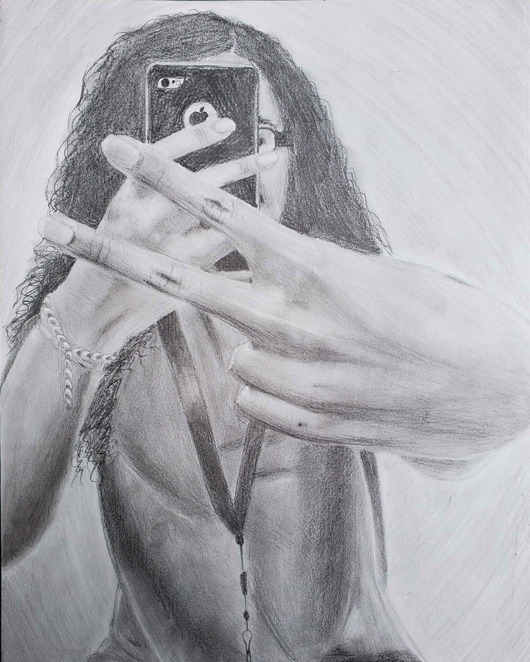
2 notes
·
View notes
Text
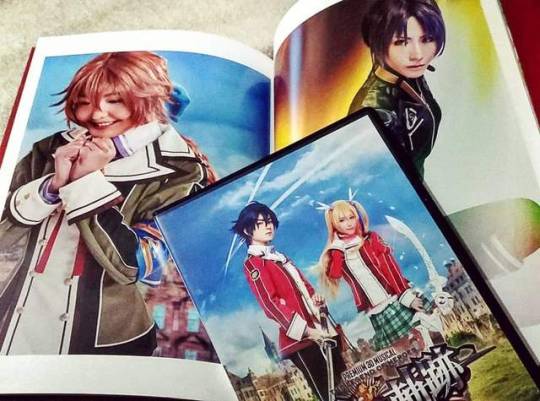
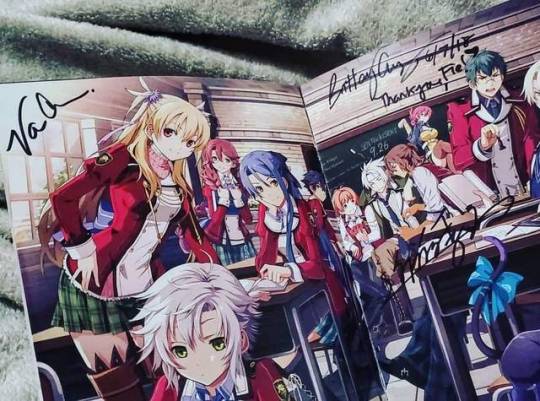

I was browsing through today's "Week if Trails" posts, show off your Kiseki collection. I adore you, my fellow collectors.
However, my brother is the one who collects the games and artbooks. I take care of everything else. I love fanmade merch and I wish there are more out there for the Legend of Heroes franchise.
I also LOVE signed stuff. I've gone to cons just to meet a voice actor. The artbook that came with the Lionheart edition is signed my almost the whole English cast including Valerie Arem (ADR director), Queen Brittany-sama, and Nihon Falcom's CEO Toshihiro Kondo. I love coming up to their signing tables and suprising them with this game (vs the more popular titles they've done). They make my day and I like to think I also make their day.
And oh, are you sick of SenMyu yet? I'm not. Lol. Fun fact, Towa is portrayed on stage by her actual JP seiyuu, Ai Nonaka. ;) And Angelica's actress is an IMAS Cinderella Girl!
1 note
·
View note
Photo
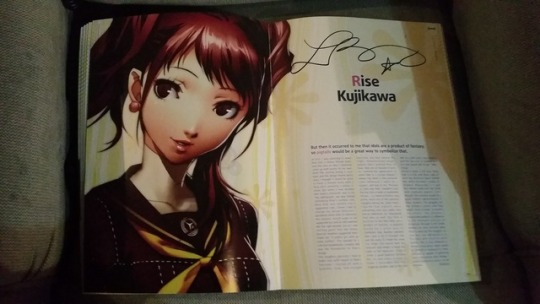
Laura Bailey. There’s so much I could’ve got her to sign, my Lucina figma, amiibo, Valkyria Chronicles... but I went with this because hey, I could get two Persona 4 voices in one convention! On day I’d like to have a “complete” signed artbook. Just... Yuri Lowenthal (who I’ve already got a signature from on something else, dang it), Erin Fitzgerald, Amanda Win-Lee, Troy Baker or Matthew Mercer, Dave Wittenburg or Sam Riegel and..... dang it, we still have no idea who voices Naoto in the original game. She’s Valerie Arem in spinoffs though.
9 notes
·
View notes
Text
NY Mysteries April 4, 2020
Good Morning, Survivors! I went to the liquor store (essential services) on Ave. B and stood outside in a line. I thought I’d fallen into a B movie. The front door was sealed. Someone said behind it What you want? “The Margarita mix,” I said. Seconds later the voice said $9 and change. I pushed some bills through a crack and the margarita mix was shoved in a bag out the door. Very exciting. So…
View On WordPress
#Graphic Lessons#Henco Espag#Judson Quarantine Artbook#Rev. Donna Schaper#Rev. Micah Bucey#Rev. Valerie Holly
0 notes
Text
Do You Know How Many People Show Up At American Abstractionists | american abstractionists
“Donald Judd didn’t accept to explain himself. Why do I accept to?” asks Jennie C. Jones, an African American abstruse painter who has grappled with the affair of how her assignment can or should reflect her race. “Fred Sandback can accomplish this admirable band and not accept to accept it actually be a allegory for his cultural identity.”
Continuity to Change: Recent History of American Abstraction | Tower … – american abstractionists | american abstractionists
Jones, 45, sidestepped the debates about multiculturalism that were angry aback she was in academy in the 1980s and gravitated against Minimalism. Yet over the aftermost decade, she has artificial a conceptual articulation in her assignment amid the histories of absorption and of avant-garde applesauce in America—“black guys in the 1950s demography applesauce into the concert anteroom and authoritative it this bluesy amalgam with Bach,” as she puts it.
In her contempo appearance at Sikkema Jenkins in New York, an absonant complete ambiance accompanied her monochromatic paintings that had acoustic panels absorbed to the canvases. Strips of beaming blush corrective on the edges of the canvases bounced off the white walls and created a faculty of movement, rhythm, and vibration. “This art and music juncture,” she says, “gave me the permission to point to article in the allowance that said, ‘I didn’t abatement out of the sky.’”
Odili Donald Odita, Firewall, 2013. The Nigerian-born Odili’s zigzagging shards of active blush beforehand colliding cultures and emotions.
©ODILI DONALD ODITA/COURTESY THE ARTIST AND JACK SHAINMAN GALLERY, NEW YORK
The contributions of African American artists to the inventions of abstruse painting accept historically been overlooked, or abroad abounding with the affectionate of questions faced by Jones. “Generations of atramentous abstruse painters never assume to be celebrated,” says Valerie Cassel Oliver, chief babysitter at the Abreast Arts Museum Houston, area she afresh organized “Black in the Abstract,” a two-part exhibition that focused on the history of African American painters alive in abstraction. She placed adolescent artists, including Jones, Shinique Smith, and Angel Otero, in chat with associates of the beforehand generation, such as Felrath Hines, Alma Thomas, and Romare Bearden, who were bearing seminal works in the 1960s.
“You acquisition these artists actuality marginalized on both ends of the spectrum,” Cassel Oliver continues. “There was this acclamation with the Atramentous Arts Movement that you did assignment that reflected the adorableness of that association in no ambiguous terms,” she says, apropos to a accumulation that coalesced in the 1960s to beforehand amusing and political assurance in art and literature. “Oftentimes abstruse painting is not as acclaimed as added allegorical assignment by the atramentous community. From the boilerplate art world, it’s aloof the faculty of not actuality absent with what atramentous artists are doing, period.”
The 1960 canvas Strange Land, included in the Houston show, would be bugged to best admirers as a assignment by Bearden. It wasn’t until 1964, aback he started authoritative collages aggressive by the rituals and rhythms of African American life, that he accomplished acclaim. Bearden and his abreast Jacob Lawrence, whose accountable amount was similar, were the best acclaimed African American artists of their time. Their acute portrayals of atramentous families were the affectionate of works abounding anticipation were bare and that they accepted from atramentous artists. Yet Bearden, in his 1946 article “The Negro Artist’s Dilemma,” bristled at the addiction to appraisal assignment by blacks on “sociological rather than esthetic” merits. His all-encompassing analysis with Abstruse Expressionism from 1952 to 1964 has gone about unnoticed. The aboriginal exhibition adherent to this absent decade of his assignment is actuality able by the Neuberger Museum of Art in Purchase, New York.
“It took a lot of candor and a lot of adventuresomeness for an African American artisan to be an abstractionist in the 1950s, ’60s, ’70s even,” says Michael Rosenfeld, who organized “Beyond the Spectrum: Absorption in African American Art, 1950–1975” at his Chelsea arcade beforehand this year. The appearance brought calm what Rosenfeld calls the first-generation African American abstruse artists—Charles Alston, Harold Cousins, Beauford Delaney, Norman Lewis, Alma Thomas, and Hale Woodruff—and the additional generation, including Frank Bowling, Edward Clark, Melvin Edwards, Sam Gilliam, Richard Hunt, Al Loving, Howardena Pindell, William T. Williams, and Jack Whitten.
Rosenfeld credibility out that Norman Lewis (1909–79) alternate in the battleground appointment organized in 1950 by Robert Motherwell and Lewis’s acquaintance Ad Reinhardt and captivated at Flat 35 in New York, area the artists present debated what to alarm the new art movement. (Abstract Exressionism was the appellation that eventually prevailed.) Yet Lewis is commonly bare from the anecdotal of this defining moment in American art. The aboriginal absolute overview of his career opens in November 2015 at the Pennsylvania Academy of the Fine Arts in Philadelphia.
The Sites of Latin American Abstraction ARTBOOK | D.A.P … – american abstractionists | american abstractionists
Alma Thomas was best up by the Martha Jackson Arcade in the 1960s and was the aboriginal African American woman to accept an exhibition at the Whitney Museum in 1972. Yet she is not able-bodied accepted today.
Howardena Pindell, Untitled #18 (detail), 1977.
©HOWARDENA PINDELL/COURTESY GARTH GREENAN GALLERY, NEW YORK
“The African American Abstruse Expressionists are allotment of the aforementioned movement as their white counterparts,” says Rosenfeld, “delving aural themselves and aggravating to accurate article universal.”
While all these artists resisted the accountability to acrylic images that told belief of atramentous experience, best were actual politically engaged. “Witness: Art and Civilian Rights in the Sixties,” on appearance at the Brooklyn Museum through July 6, includes works by several committed abstractionists who begin means to amalgamate their art and activism.
The 80-year-old Sam Gilliam, accepted for his admirable color-field canvases that he sometimes apparel sculpturally on the wall, corrective a awe-inspiring canvas decrepit and splattered all over with hot pinks and reds, blue-blooded Red April (1970), in absolute acknowledgment to the assassination of Martin Luther King Jr. on April 4, 1968.
Shinique Smith, Kaleidoscope, 2013.
COURTESY THE ARTIST AND JAMES COHAN GALLERY, NEW YORK
Lewis’s Untitled (Alabama) from 1967 shows a army of absent angular abstracts in white arranged into a bladelike appearance slicing through a atramentous field. The artisan consistently disavowed apparent anecdotal agreeable in his work, but the beheld advancement of hooded Klansmen calm with the appellation acutely alludes to the civilian rights movement.
Post-War American Abstraction at Van Doren Waxter | Fine Art Shippers – american abstractionists | american abstractionists
“Lewis became a alarm for the abutting generation, affective into an abstruse amplitude and saying, ‘I don’t accept to put that accountability of representation on my work,’” says Kellie Jones, cocurator of “Witness” and accessory assistant of art history and archeology at Columbia University. “Somebody like Jack Whitten makes the aforementioned decision.”
The Brooklyn appearance includes Whitten’s Birmingham 1964, in which a bi-weekly photograph of a action in Birmingham is partially appear beneath layers of stocking cobweb and atramentous oil paint, like a anguish that can’t be covered over. The 74-year-old artist, who grew up in Alabama and confused to New York in 1960 as an art student, admired the Abstruse Expressionists, abounding of whom he met at the Cedar Tavern. While Whitten said he acquainted accountability to accomplish assignment about the civilian rights movement in the 1960s—and capital to do so—he fabricated a absolute bound into absorption in 1970.
“If I was activity to get about Bill de Kooning, aboriginal of all I had to go faster than he, and additional of all I had to do article abundant beyond than he,” says Whitten, who created a 12-foot-wide apparatus he alleged the “developer” to annoyance acrylic in a distinct action beyond the absolute account plane. (This was a decade afore Gerhard Richter began his heralded abstruse paintings application a agnate technique.) Whitten, who shows at Alexander Gray Associates in New York, will be the accountable of a above attendant at the Museum of Abreast Art San Diego in September.
As a alum apprentice at Yale in the mid-1960s Howardena Pindell, 71, additionally begin afflatus in the assignment of the beforehand bearing of abstractionists —namely Ad Reinhardt’s paintings of close-value colors and Larry Poons’s Op art canvases of circles and ovals. Throughout the ’70s, Pindell experimented with color, surface, and texture. She cut out hundreds of tiny cardboard dots with a accepted aperture puncher, collaged them assimilate cut-and-quilted canvases, and smothered them in layers of acrylic, dye, sequins, glitter, and powder. One of them, the pale, beaming Untitled #20: Dutch Wives, Circled and Squared (1978), was included in “Black in the Abstract.”
“I bethink activity with my abstruse assignment to the Flat Museum in Harlem, and the administrator at the time said to me, ‘Go city and appearance with the white boys,’” says Pindell, abacus that William T. Williams and Al Loving met with the aforementioned affectionate of response. “We were basically advised traitors because we didn’t do accurately academic work.”
Jack Whitten, Chinese Sincerity, 1975. He fabricated a bound from politically affianced assignment into abstraction.
COURTESY ALEXANDER GRAY ASSOCIATES, NEW YORK/MUSEUM OF CONTEMPORARY ART SAN DIEGO
Pindell, who aloof had an exhibition at Garth Greenan in New York, says her acquainted ambition was to analyze the artful possibilities of the amphitheater aback she started on those works. Again she was abashed by a adolescence anamnesis that came aback to her. On a car ride through Kentucky in the 1950s, she and her father, who lived in Philadelphia, chock-full at a root-beer angle and were served mugs with red circles on the bottom.
“I asked my father, ‘What is this red circle?’” she recalls. “He said, ‘That’s because we’re atramentous and we cannot use the aforementioned accoutrement as the whites.’ I accomplished that’s absolutely the agent of my actuality apprenticed to try to change the amphitheater in my mind, aggravating to booty the bite out of that.”
American Abstract Painting and the Last Monet | Paris Update – american abstractionists | american abstractionists
Odili Donald Odita, 48, says that he feels accountable to the chain of the beforehand bearing of atramentous abstruse artists who asserted claimed abandon in the face of an art bazaar that adored cultural and political stereotypes. In the aboriginal 1990s, as a adolescent artisan out of alum academy at Bennington College in Vermont, area he advised the assignment of boilerplate abstruse painters such as Helen Frankenthaler and Kenneth Noland, Odita got a job at Kenkeleba House in New York, endemic by the painter Joe Overstreet, who calm and showed assignment by African American artists. Stunned that he had never heard of these artists, Odita began a activity to account abstruse painters from the 1970s and 1980s, such as Pindell, Loving, Edward Clark, Frank Bowling, and Stanley Whitney. Odita’s analysis grew into a alternation of talks he has accustomed at universities over the years.
“Any affectionate of academic apparatus in the assignment of atramentous artists was apparent as, if not additional rate, again article done the additional time around,” says Odita, acquainted that Clark laid affirmation to authoritative the aboriginal shaped painting—before Frank Stella—and that the king-making art analyzer Clement Greenberg consistently visited Bowling’s flat but never took the befalling to address one chat in abutment of his work. “In the antagonism of the avant garde in avant-garde art, these older-generation African Americans acquainted blank and marginalized in the chase to beforehand art.”
Odita didn’t appetite his own assignment subsumed beneath the accepted anecdotal of Stella and Noland, and all this advice helped him cross his aisle as an abstruse artist. Because his ancestors fled the civilian war in Nigeria aback he was a babyish and acclimatized in Ohio, he grew up with the duality of African traditions at home and American pop ability in school. In 1999, he started authoritative geometric paintings in which shards of active colors askew and adjoin in compositions that beforehand colliding cultures and emotions.
“I capital bodies to analyze the adumbration of Africa with this anatomy and blush and see the patterns of one apple and addition apple blame into the amplitude of the painting,” Odita says. He draws on the palette and designs of African textiles, TV analysis patterns, the Nigerian landscape, and burghal wallpaper in his work, which he shows at Jack Shainman in New York. “If it’s successful, it doesn’t end in that trope. Again bodies alpha agreeable with added things that are occurring—texture, color, the activating of the composition, light, what the amplitude creates, how it relates to your anatomy and mind,” he says.
James Little, 60, additionally has an affection for color, design, and anatomy in his hard-edge abstruse paintings that are acerb afflicted by jazz. “I’ve ample out means of suggesting movement, rhythm, speed, and how to about-face color,” says Little, pointing out that de Kooning and Piet Mondrian were additionally responding anon to jazz. “I acquainted that abstraction, advancing from my background, which was a actual absolute accomplishments in Tennessee, reflected for me the best announcement of abandon and optimism and freedom. I’ve had to do an acclivous action in a lot of means in the art apple on both sides, amidst the blacks and whites, but I’ve aloof absolutely ashore with what I accept in.” His canvas Juju Boogie Woogie (2013) was included in “Black in the Abstract.”
James Little, Juju Boogie Woogie, 2013.
COURTESY THE ARTIST AND JUNE KELLY GALLERY, NEW YORK
June Kelly, whose arcade represents Little, has noticed a absolute about-face in the art apple at ample against atramentous abstruse painters. “There’s a admirable accumulation of collectors who are added acceptant to the assignment of atramentous abstruse painters now,” says Kelly. “As they apprehend added and look, they see the charge to accessible up their collections. The writings and exhibitions of atramentous historians and curators such as David Driskell, Kellie Jones, Richard J. Powell, Lowery Stokes Sims, Judith Wilson, and Valerie Cassel Oliver are authoritative a difference.”
Jennie C. Jones is captivated by the ample cardinal of atramentous collectors who are now absorbed in her work. She credits, in part, Flat Museum administrator Thelma Golden, who has organized such shows as “Energy/ Experimentation: Atramentous Artists and Absorption 1964–1980” in 2006.
"Eye Candy #3" (19×24) by famous American artist and … – american abstractionists | american abstractionists
“Over the aftermost 20 years, she has been absolutely educating atramentous collectors to footfall abroad from absorption on the WPA era,” says Jones, who will accept a abandoned appearance at the Abreast Arts Museum Houston in October. “I accept atramentous collectors today who say, ‘I’ve consistently been in adulation with Russian Constructivism, and now I feel I can accept article abutting to that but reframed in a new context.’”
A adaptation of this adventure originally appeared in the June 2014 affair of ARTnews on folio 62 beneath the appellation “Black Abstraction: Not a Contradiction.”
Do You Know How Many People Show Up At American Abstractionists | american abstractionists – american abstractionists
| Delightful to help the website, with this period I’ll demonstrate concerning keyword. And from now on, this can be a primary picture:
1000+ images about Ilya Bolotowsky on Pinterest | Abstract … – american abstractionists | american abstractionists
What about graphic above? is actually that amazing???. if you believe so, I’l l demonstrate a number of impression again under:
So, if you would like obtain these great photos regarding (Do You Know How Many People Show Up At American Abstractionists | american abstractionists), just click save link to save the pictures for your personal pc. These are all set for transfer, if you appreciate and wish to grab it, just click save logo in the web page, and it will be instantly saved to your home computer.} Finally if you want to receive unique and latest graphic related to (Do You Know How Many People Show Up At American Abstractionists | american abstractionists), please follow us on google plus or save this website, we try our best to provide regular up-date with fresh and new images. We do hope you enjoy staying right here. For some up-dates and latest news about (Do You Know How Many People Show Up At American Abstractionists | american abstractionists) pics, please kindly follow us on twitter, path, Instagram and google plus, or you mark this page on book mark area, We try to present you up-date regularly with fresh and new pics, love your surfing, and find the perfect for you.
Thanks for visiting our site, contentabove (Do You Know How Many People Show Up At American Abstractionists | american abstractionists) published . At this time we are pleased to announce that we have discovered an awfullyinteresting topicto be discussed, namely (Do You Know How Many People Show Up At American Abstractionists | american abstractionists) Many individuals looking for information about(Do You Know How Many People Show Up At American Abstractionists | american abstractionists) and certainly one of these is you, is not it?
AmericanBrits: Differences between American and British … – american abstractionists | american abstractionists
American Abstraction | Wall Street International Magazine – american abstractionists | american abstractionists
Abstract Expressionism, short described in quotes – the … – american abstractionists | american abstractionists
29 Best American Abstraction images | Painted canvas, American … – american abstractionists | american abstractionists
Art Fix Daily – Eye on the Art World – american abstractionists | american abstractionists
happy 90th birthday wayne thiebaud – american abstractionists | american abstractionists
250 Film Challenge: American Psycho (Favorite 11/50 … – american abstractionists | american abstractionists
The PICTURE: American Abstraction | The New Republic – american abstractionists | american abstractionists
Background American Star Abstraction Stock Vector (Royalty … – american abstractionists | american abstractionists
The Changing Complex Profile of Black Abstract Painters -ARTnews – american abstractionists | american abstractionists
American state georgia map hex-tile abstraction Vector Image – american abstractionists | american abstractionists
Apple Symbols Are Combined Into American Map Abstraction. Vector … – american abstractionists | american abstractionists
SFMOMA Cruise Ship Makes Port With Trophies Aboard … – american abstractionists | american abstractionists
How Native American Artist Fritz Scholder Forever Changed … – american abstractionists | american abstractionists
Black Female Artists | SUPERSELECTED – Black Fashion … – american abstractionists | american abstractionists
JMG Artblog: Highlights: Stuart Davis and American Abstraction: A … – american abstractionists | american abstractionists
Synchromy in Orange: To Form, 1914 – Morgan Russell … – american abstractionists | american abstractionists
Twienth Century Abstraction Nature American Evolution exhibition … – american abstractionists | american abstractionists
The New American Abstraction 29 – 29 | Thames & Hudson Australia … – american abstractionists | american abstractionists
THE BLACK DIAMOND AMERICAN DREAM # 2 | Robert Indiana … – american abstractionists | american abstractionists
Beyond the Spectrum: Abstraction in African American Art, 29-29 … – american abstractionists | american abstractionists
Forms of Abstraction: American Abstraction from the 1950s … – american abstractionists | american abstractionists
Approaching American Abstraction | Wall Street International Magazine – american abstractionists | american abstractionists
from WordPress https://americanartist.club/do-you-know-how-many-people-show-up-at-american-abstractionists-american-abstractionists/
0 notes
Text
Me, an ace artist, whenever I encounter someone pretty irl: Wow that sure is some aesthetically pleasing character design right there
#why am i like this???#not art#sorry guys#i make a post and instead of a drawing it’s this#finals are next week#this is how i de-stress#asexual#ace#acespec#aesthetic attraction#valeries artbook#artists on tumblr#waffle ramblings
39 notes
·
View notes
Photo
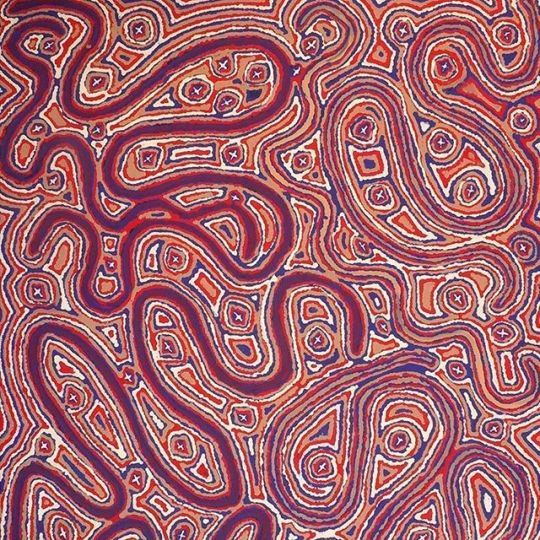
"The Jukurrpa site shown in this painting is for the ngatijirri (budgerigar) at Yangarnmpi, south of Yuendumu. Men would hunt for ngatijirri nests, robbing them of eggs and juvenile birds, which are both considered delicacies.” Follow the shopping link to find out more about the story in this beautiful painting. . . Ngatijirri Jukurrpa (Budgerigar Dreaming) by Valerie Napurrurla Morris of Warlukurlangu Arts (@warlu_art) 💙 Great to see the Warlu crew at @desert_mob last week 😘 #bluethumbartist #nonudewalls . . . . #artist #bluethumb #art #australia #australianartist #inspiration #artoftheday #paintingoftheday #photooftheday #abstract #artcollectors #artwork #artbook #colour #creative #drawing#fineart #design #illustration #artgallery #artinfo #artnews #artshow #indigenous #indigenousart #aboriginalart #budgerigar #aborginaldreaming https://ift.tt/1TN6MFr
0 notes
Text
Bart Cassiman (°1961), freelance-curator, art critic and editor, is an art historian and studied press- and communication sciences at the Ghent University (1979-1984).
Early Years
He was the project-leader of the exhibition Initatief 86 which took place in the St. Pieters Abbey and the Museum of Contemporary Art of Ghent in 1986. This was an exhibition on Belgian art for which Kasper König, Jan Hoet, Jean-Hubert Martin and Gosse Oosterhof made the selection. The exhibition included a.o. works by Chantal Akerman, Guillaume Bijl, Jacques Charlier, Luc Deleu, Lili Dujourie, Jef Geys, René Heyvaert, Raoul De Keyser, Marie-Jo Lafontaine, Panamarenko, Guy Rombouts, Walter Swennen, Narcisse Tordoir, Jan Vercruysse and Didier Vermeiren,… 1
From September 1986 until the end of 1988, Bart Cassiman was curator for Contemporary Art at the Palais des Beaux-Arts (BOZAR) in Brussels where he organized (in collaboration with the director Jan Debbaut) several exhibitions of contemporary art (Gilbert & George, John Baldessari, Didier Vermeiren, Narcisse Tordoir, Claes Oldenburg, Art & Language, Luciano Fabro, Per Kirkeby, Jan Vercruysse,…)
Curatorial Practice
As a free-lance curator he organized several exhibitions between 1989 and 1991. Amongst others:
Rombouts and Tordoir, Douglas Hyde Gallery, Dublin, 1989.
Noli me tangere - with Lili Dujourie and Cristina Iglesias, Locus Solus - Genova, Italy, 1990.
De Pictura - an exhibition on motive and alibi in the painting of Herbert Brandl, Helmut Dorner, John Murphy, Mitja Tušek, Narcisse Tordoir and Walter Swennen - Bruges La Morte, Bruges, 1990.
The solo-exhibitions of Lili Dujourie, Kunstverein, Bonn, 1989; Le Magasin, Grenoble, 1990.2
Espacio Mental with René Daniëls, Thierry De Cordier, Isa Genzken, Cristina Iglesias, Thomas Schütte and Jan Vercruysse at Valencia, IVAM-El Carme in 1991 was his first major group show and has made Cassimans name as a particular exhibition maker. The exhibition contained about 80 works, was complex and layered so that the different interrelations between the artworks became almost endless.3
He has been a member of the Jury of the Mies van der Rohe Stipendium, Krefeld (1990-1995) and also of the program-commission of the Appel Foundation, Amsterdam (1989-1993).
Bart Cassiman’s reputation became really established when he has been the project-leader of the section Contemporary Visual Art of Antwerp 93, European Capital of Culture. For this temporary organization he realized three major projects which differed in terms of intent and content.
For the Middelheim Museum he invited ten artists (Per Kirkeby, Richard Deacon, Panamarenko, Thomas Schütte, Juan Muñoz, Matt Mullican, Bernd Lohaus, Harald Klingelhöller, Didier Vermeiren, Isa Genzken) to make a work, which was bought by Antwerp 93 for the permanent collection. Those sculptures are nowadays considered as masterpieces and several of them the eyecatchers of the Middelheim Museum. They were placed on Middelheim Low, which became by doing so the section of contemporary art of the museum. A section invented by Cassiman and realized with the support of Bob Cools (The Mayor), Eric Antonis (the intendant of Antwerp 93) and Hans Nieuwdorp (the director of the Art Historical Museums of the City of Antwerp). This project became known as New Sculptures.4
For the first time, the Royal Museum of Fine Arts hosted contemporary artists who gave form to entwining of remembrance and imagination in the creative process. This project (exhibition and book), The Sublime Void (on the memory of the imagination), can be considered as his ‘pièce de résistance’, included the artists Jean-Marc Bustamante, Jan Vercruysse, Rachel Whiteread, Juan Muñoz, Niek Kemps, John Murphy, Mitja Tušek, Gerhard Richter, Michelangelo Pistoletto, Luc Tuymans, Robert Gober, Cristina Iglesias, Harald Klingelhöller, Didier Vermeiren, Thomas Schütte, Ettore Spalletti, Luciano Fabro, Jeff Wall, Jannis Kounellis, René Daniëls, Franz West, Fortuyn/O'Brien, James Welling, Lili Dujourie and Thierry De Cordier. The accompanying publication contains texts, essays, poems etc. by a.o. Adorno, Augustinus, Baudelaire, Benjamin, Blanchot, Borges, Broch, Canetti, Handke, Hölderlin, Kafka, Kristeva, Musil, Michelangelo, Nietzsche, Pascal, Proust, Rilke, Valery, Wenders, Wordsworth… It has been rewarded with the Gouden penning van Plantijn-Moretus, an award for the best book published in 1993.5
For the third project, he invited after conscientiously research and several workshops three colleagues-curators (Iwona Blazwick, Yves Aupetitallot and Carolyn-Christov Bakargiev) to make an exhibition with artists from different cultural backgrounds to produce a new work in the extended M HKA. The for a long time underestimated exhibition On taking a normal situation and translating it into overlapping and multiple readings of conditions past and present which included at that time a few quite well-known artists (such as Jimmy Durham, Mark Dion, Eugenio Dittborn, Judith Barry and Renée Green) in combination with a lot of artists who were at the beginning of their public life and have since then co- determined the international discourse for years (Maria Eichhorn, Zarina Bhimji, Ann Veronica Janssens, Andrea Fraser,…)6
From 1994 until 1998 he was member of the advisory-committee of the Middelheim Museum, Antwerp.
In 1995 he realized an exhibition with Dora García, Dianne Hagen, Gert Verhoeven, Lisa May Post, Anne-Marie Schneider and Stephen Wilks, at Galerie Nelson, Paris. In the same year he co-ordinated the project Arte Habitable with Alicia Framis. He wrote the essay for the catalogue which he edited too.7
In 1997 Bart Cassiman curated the exhibition and edited the publication Green Easter (with Dianne Hagen, Carla Klein, Aglaia Konrad, Peter Rogiers, Stephen Wilks and Robert Suermondt) at the Museum Dhondt-Dhaenens, Deurle.8 He wrote a substantial essay on the work of Lili Dujourie and edited the catalogue and curated the show at Lisson Gallery, London. 9
At the Rijksakademie in Amsterdam he curated the Open Studio’s 1997. This project included more than 50 young artists, such as Carlos Amorales, Emmanuelle Antille, Lise Baggesen, Maura Biava, Franck Bragigand, Jeroen Eisinga, Meshac Gaba, Winneke Gartz, Mark Hosking, Runa Islam, Saskia Janssen, Moshekwa Aaron Langa, Fang Lijun, Els Opsomer, Ebru Özseçen, Anne Van der Plas, De Rijke/De Rooij, Emmanuel Ropers, Dierk Schmidt, Tim Stoner, Tomoko Take, Fiona Tan, Hermann Terrier, Claire Todd, Vera Weisgerber, Edwin Zwakman,…
At the end of 1997 he organized also two exhibitions with the Belgian painter Jan Van Imschoot. In Hasselt (Provinciaal Museum) he curated his first painting overview. In Amsterdam (Artbook) he curated an exhibition on drawings.
In 1998 he organized his - till today - last exhibition: Privacy: Tuymans – Balka for Serralves, Porto.10
In 2000 he was responsible for the Flemish selection for the Milano Europa 2000 project. The selected artists were: Marie José Burki, Jan Van Imschoot and Gert Verhoeven.
Art Critic
Bart Cassiman is also active as a free-lance art-critic, having written essays for catalogues on a.o. René Daniëls, Raoul De Keyser, Harald Klingelhöller, Lili Dujourie, Cristina Iglesias, Jan Vercruysse, Thierry De Cordier, Paul Robbrecht, Walter Swennen, Narcisse Tordoir, Henk Visch, Guy Rombouts, Dianne Hagen, Peter Rogiers, Stephen Wilks, Juan Muñoz, Thomas Schütte, Isa Genzken, Alica Framis, Robert Suermondt, Aglaia Konrad, Carla Klein,… and several articles for international art-magazines (Flash Art, Kunst & Museumjournaal, Meta, Artefactum, Kunst Nu and Metropolis M), about art policy and specific subjects related to art.
In 1989 he edited the first small monography De architectuur en het beeld (The Architecture and the Image) on the work of the architects Paul Robbrecht/Hilde Daem.11 In 1995 he did the same on the work of Thierry De Cordier with a text of Stefan Hertmans.12
In 1996/1997 he is a member of the staff of editors of DWB (Dietsche Warande en Belfort), an important magazine on literature. For this he edited a special number (DWB 6/97) on Juan Muñoz.13
Educational Parcours
On the level of education, Bart Cassiman has been, besides for almost a decade (1989 – 1998) tutor at the Rijksakademie, Amsterdam, a guest-lecturer at the Appel Foundation in Amsterdam and Le Magasin in Grenoble (for the curator training which is organized by those institutes), at Sotheby’s London (educational studies for future artworld-professionals) and at P.A.R.T.S., the institute for dance founded by Anne Teresa De Keersmaeker of Rosas.
Since 1985 he participated at many lectures, symposiums and workshops on the subject of contemporary art organised by different museums, art institutions and galleries. amongst others in Geneva he participated at the symposium La possibilité de l'art. Où commence, où finit l'art dans le monde de l'art contemporain (25-26 February 1989, Centre d'Art Contemporain Genève|Centre d'art contemporain) and in Stuttgart at A new spirit in curating (25-26 January 1992, Künstlerhaus). He was a member of the studygroup which prepared the symposium Writing about art (1991, Van Abbe Museum, Eindhoven). At the occasion of the publication Art, gallery, exhibition. The gallery as a vehicle for art, edited by gallery Andriesse and De Balie, Amsterdam, he took part in the symposiums organized in Amsterdam (7 September 1996), Rotterdam (8 September 1996) and Antwerp (8 October 1996). In Brussels (25-26 October 1996) he participated at the colloquium Art et commande publics, organized by Encore Bruxelles.
The Absent Museum.
From 1989 until 2000 he was responsible for the BACOB bank collection of contemporary art. The collection contained at the end about 180 works of around 40 different international artists, a.o. Stan Douglas, Franz West, Herbert Brandl, Lili Dujourie, Cristina Iglesias, Thomas Schütte, Harald Klingelhöller, Allan McCollum, Narcisse Tordoir, Helmut Dorner, Luc Tuymans, Jan Fabre, Bazilebustamante, Jean-Marc Bustamante, Thierry De Cordier, James Welling, Juan Muñoz, Jan Vercruysse, Mitja Tušek, Gert Verhoeven, Stephen Wilks, Dianne Hagen, Jan Van Imschoot, Robert Suermondt, Carla Klein, Niek Kemps, Alicia Framis, Isa Genzken, Ebru Özseçen, Gregor Schneider, Valerie Mannaerts, Bjarne Melgaard, Mike Kelley, Carlos Amorales, Miroslav Balka.
Due to a severe illness Bart Cassiman was forced to stop all his professional activities at the end of the nineties. Without any doubt one can say that he was one of the most active and energized persons of the artworld between the mid-eigthies and the end of the nineties. With colleagues such as Saskia Bos, Ulrich Loock, Julian Heynen, Dennis Zacharopoulos and a few others he was responsible for the visualization of a generation by making exhibitions and writing texts and convincing many museums and collectors to buy their works.
The bank for which he collected more than a decade bought as a result of his engagement and advise the well-known Vanderborght building in the heart of Brussels, at the end of the nineties. Everything was prepared to open the first private (corporate) museum on this scale in Western Europe. The opening was planned for the spring of 2002. But because the engine of this whole operation fell silent the project died a quiet dead. Big parts of the collection were sold and so stays the capital of Europe deprived of an urgently needed Museum of Contemporary Art…
References.
Cassiman, Bart; Martin, Jean-Hubert; König, Kasper; Oosterhof, Gosse; Hoet, Jan (1986). Initiatief 1986. Gent, Belgium: Imschoot.
Cassiman, Bart (1989). Lili Dujourie. Grenoble: Centre national d'art contemporain.
Cassiman, Bart (1991). Espacio mental. Valencia: Generalitat Valenciana.
Pauwels, Hilde (1993). Nieuwe beelden : Openluchtmuseum voor Beeldhouwkunst Middelheim. Antwerpen: Antwerpen.
Cassiman, Bart; Ramael, Greet; Vande Veire, Frank (1993). The sublime void : on the memory of the imagination. Ghent: Ludion.
Cassiman, Bart (1993). On taking a normal situation … Antwerpen: Antwerpen 1993 v.z.w. / Museum van Hedendaagse Kunst, Antwerpen.
Cassiman, Bart (1995). Arte Habitable. Amsterdam.
Cassiman, Bart (1997). Green Easter. Museum Dhondt-Dhaenens. Deurle: Museum Dhondt-Dhaenens.
Dujourie, Lili; Cassiman, Bart (1997). Lili Dujourie. London: Lisson Gallery.
Ramos, Maria (1998). Privacy : Luc Tuymans/Miroslaw Balka. Porto, Portugal: Fundação de Serralves.
Cassiman, Bart (1989). Paul Robbrecht Hilde Daem. De architectuur en het beeld. Antwerpen: deSingel.
Hertmans, Stefan (1995). Eenzaamheid op de marktplaats. Over het werk van Thierry De Cordier. Brussel: Hayen.
Cassiman, Bart (December 1997). “Juan Muñoz”. Dietsche Warande & Belfort. N°6.> Further Reading
Primary sources.
Cassiman, Bart. “The pictorial diversity of a generation”. 6 Young Flemish Artists. Dirk De Bruycker, Walter Swennen, Philippe Tonnard, Narcisse Tordoir, Hans Vandekerckhove, Philippe Vandenberg. Washington: Art Society of The International Monetary Fund (1986).
Cassiman, Bart. “«Farbzustände» von Raoul De Keyser”. Guillaume Bijl, Jan Vercruysse, Lili Dujourie, Raoul De Keyser. Bern: Kunsthalle Bern (1986).
Cassiman, Bart. “Einigie (möglische) Überlegungen zum Niederschlag von René Daniëls’ amüsiertem Umgang mit der Wirklichkeit in Wort und Bild”. Daniëls. Bern: Kunsthalle Bern (1987).
Cassiman, Bart. “L'Oeuvre au Noir”. Flash Art. N°146 May / June 1989.
Cassiman, Bart. Harald Klingelhöller. Eindhoven: Stedelijk Van Abbemuseum; London: The Whitechapel Art Gallery (1990).
Cassiman, Bart. “Alzumeazume or La Musee Amusée”. Kunst & Museumjournaal. N° 5 1990.
Cassiman, Bart. “Images and their effects: Imagination in the plural” Walter Swennen. Heerlen: Stadsgalerij (1990).
Cassiman, Bart. Cristina Iglesias. Amsterdam: De Appel (1990).
Cassiman, Bart. “Propos sur le maître de schoorisse” L'Art en Belgique. Flandre et Wallonie au XXe Siècle. Un point de vue. Paris: Musée d'Art Moderne de la Ville de Paris (1991).
Cassiman, Bart. “Het relaas van een wanhoop: over de meester van Schoorisse. Thierry De Cordier” Kunst & Museumjournaal. N°5 (1992).
Cassiman, Bart “Necessary but not urgent” Pose. N°9 Spring / Summer 1993.
Cassiman, Bart. “Lili Dujourie” Kunst in België na 1980. Brussel: Koninklijke Musea voor Schone Kunsten van België (1993).
Cassiman, Bart. “Jan Vercruysse” Kunst in België na 1980. Brussel: Koninklijke Musea voor Schone Kunsten van België (1993).
Cassiman, Bart (a.o.) “Middelheim, 1995+…” De WItte Raaf. N°58, November-December 1995.
Cassiman, Bart. “Par amour de l'art” De Morgen. 1 December 1995.
Cassiman, Bart. “The same again, but different” L&B (Lier en Boog). Series of Philiosophy of Art and Art Theory. Volume 13 (1998).
Cassiman, Bart. “Adieu Chantal” Knack Focus. 10 October 2015.
Secondary sources.
Early Years.
Waterschoot, Hector. “Een hete, artistieke zomer. Gentse musea en galerijen brengen een monsterprojekt : Initiatief 86” Knack. 18 June 1986.
Van Den Abeele, Lieven. “Initiatief 86. Alleen visitekaartje van Belgische kunst” De Standaard. 27 June 1986.
Gillemon, Danièle. “L'art contemporain à Gand: une abondance d'expositions pour vous édifier ou vous achever !” Le Soir. 25 July 1986.
Meuris, Jacques. “«Initiatief 86» : Gand au carrefour de l'art contemporain” La Libre Belgique. 11 July 1986.
De Baere, Bart. “Het is geen diktaat over Belgische Kunst” Special Knack Magazine. (1986).
De Zutter, “Initiatief '86 of hoe een mug een olifant baarde” De Morgen. 21 June 1986.
Curatorial Practice.
Borka, Max “Lili Dujourie in het Bonner Kunstverein. Fluweel en schone schijn. Verdwaalde rekwisieten op zoek naar een auteur.” De Morgen. 28 December 1989.
Favet, Catherine. “Lili Dujourie” Art Press. October 1990.
Bost, Bernadette. “Velours et marbres de Lili Dujourie” Le Monde. 11 July 1990.
Braet, Jan. “Moord in de galerie” Knack. 18 July 1990.
De Cecco, Emanuela. “Lily Dujourie, Cristina Iglesias. Locus Solus” Flash Art. April / May (1991).
Borka, Max. “'Espacio Mental’ in Valencia. De nazaten van de Heilige Hiëronymus” De Morgen. 31 May 1991.
Penxten, Stéphane. “L'imagination au pouvoir” La Libre Belgique. 12 June 1991.
Cortés, José Miguel G. “Los estratos de la mente. Seis artistas europeos en Valencia” El Pais. 1 June 1991.
Jarque, Vicente. “Moradas del arte. El Centre del Carme acoge una muestra colectiva bajo el título de Espacio mental” Cultura. June 1991.
Middendorp, Jan. “Ver van de dolle menigte” Knack. 26 June 1991.
Lambrecht, Luk. “Mental Space” Forum International. N° 10, November 1991.
Entrop, Pieter. “Bart Cassiman” Metropolis M. N° 4 1991.
Braet, Jan. “Antwerpen '93. Het ideale museum” Knack. 10 March 1993.
Van Den Bergh, Jos. “Bart Cassiman on his show "The Sublime Void”“ Forum International. N°18 May / August 1993.
Gillemon, Danieèle. "Le Deuxième Souffle du Middelheim” Le Soir. 9 June 1993.
Braet, Jan. “Antwerpen '93. Als op een zomernacht. Nieuwe Beelden voor Middelheim” Knack. N°24 1993.
Lubbers, Frank. “Nieuwe Beelden” Metropolis M. N° 4 1993.
Van Mulders, Wim “Nieuwe beelden voor het Middelheim” Muziek & Woord. June 1993.
Turine, Roger Pierre. “Le Middelheim contemporain” La Libre Belgique. 11 June 1993.
McFadden, Sarah. “Sculpture garden sprouting new works. The Middelheim museum enjoys a breath of fresh air” The Bulletin. 24 June 1993.
S.N. “Kirkebys store skulptur/hus” Politiken Sǿndag. 18 July 1993.
Van der Geer, Cees. “Herwaardering van een beeldenpark” Haagse Courant. 19 July 1993.
Montón, Carmen. “Amberes y Lisboa planean ceder parte de la capitalidad cultural europea a Sarajevo” La Vanguardia. 25 July 1993.
Bracke, Eric. “Hedendaagse kunst in Antwerpen: 'Het sublieme gemis’. Met andere woorden” De Morgen. 30 July 1993.
Chauvy, Laurence. “Expositions à Anvers. L'imagination et sa mémoire / La surprise est dans le parc” Journal de Genève et Gazette de Lausanne. 31 July 1993.
Braet, Jan. “Antwerpen '93. De Lege Ruimte” Knack. 4 August 1993.
Borka, Max. “Letter from Antwerp” The Bulletin. 5 August 1993.
Depondt, Paul. “Dingen waarvan de tijd nog niet is aangebroken” De Volkskrant. 6 August 1993.
Romare, Kristian. “Skulptur for skulpturer” Information. 6 August 1993.
Von Radziewsky, Elke. “Der geliehene Sinn” Die Zeit. 6 August 1993.
Van der Geer, Cees. “Kunstwerken als toekomstige dingen” Haagse Courant. 18 August 1993.
Braet, Jan. “In de maag van geest” Knack. 18 August 1993.
Braudeau, Michel. “L'Anvers de l'art” Le Monde. 21 August 1993.
Muller, Robert-Jan. “Tien nieuwe beelden in Middelheim” Archis. September 1993.
Marcelis, Bernard. “Le Manque Sublime” Art e Culture. September 1993.
Puvogel, Renate. “The Sublime Void” Kunstforum. September 1993.
Barten, Walter. “Doorbroken concepten. Twee boeiende exposities in culturele hoofdstad Antwerpen93” Het Financieele Dagblad. 4 September 1993.
Vonck, Bart. “Hun tijd is nog niet aangebroken. Tentoonstelling 'Het Sublieme Gemis’” Markant. N°35 10 September 1993.
Lebovici, Elisabeth “L'Anvers du décor” Libération. 18 September 1993.
Bouman, Ole. “Talent voor de ultieme leegte” De Groene Amsterdammer. 22 September 1993.
Braet, Jan. “Tegen de nieuwe schoolmeesters” Knack. (1993).
Lambrecht, Luk. “Over een drieluik” Antwerpen 93. (1993).
Ruyters, Marc. “Afsluiting van drieluik in het MUHKA. Ook beeldende kunst weet het antwoord niet” Financieel Economische Tijd. 25 September 1993.
Wilson, Andrew. “Antwerp 93” Art Monthly. November 1993.
Lambrecht, Luk. “Antwerp 93” Flash Art. November / December 1993.
Bracke, Eric. “De versnipperde archipel” De Morgen. 14 February 1997.
Borka, Max. “Groene Pasen bloemleest kunst uit schemerzones” De Standaard. 15 February 1997.
Braet, Jan. “Eros en Narcis in hun eerste bloei” Knack. 26 February 1997.
Barten, Walter. “Eigenzinnig en consequent” Het Financieele Dagblad. 3 March 1997.
Lorent, Claude. “Le printemps de l'art actuel” La Libre Belgique. 10 March 1997.
Pontzen, Rutger. “Groene Pasen” Metropolis M. N°2 1997.
Borka, Max. “Onder lakens van lood. Lili Dujourie in de Londense Lisson Gallery” DS MAGAZINE. 13 June 1997.
Van Hove, Jan. “Broedplaats voor jonge kunst. Rijksacademie Amsterdam houdt open ateliers” De Standaard. 1997.
Roos, Robbert. “Rijksakademie open voor jacht op het nieuwste talent” Trouw. 28 November 1997.
Ruyters, Marc. “De onacademische aanpak van de Rijksacademie” De Financieel-Economische Tijd. 29 November 1997.
Art Critic.
Van Synghel, Koen. “Museum voor Krappe Kunsten. Het Koninklijk Museum voor Schone Kunsten in Antwerpen op zoek naar ruimte in eigen huis” DS MAGAZINE. 8 December 1995.
Ruyters, Marc. “Tegen '92 zou Brussel zowat de Kunsthalle van Europa moeten zijn. Interview met Bart Cassiman” De Morgen. 28 September 1988.
Braet, Jan. “Kunst om te stelen” Knack. 17 September 1997.
The Absent Museum.
Pitteljon, Honoré (ed.). Artesia Center for the Arts. Bruxelles: Artesia Banking Corporation (1999).
Mast, Michel (ed.) Bacob & Art. Bruxelles: Bacob & Art (1996).
0 notes
Photo
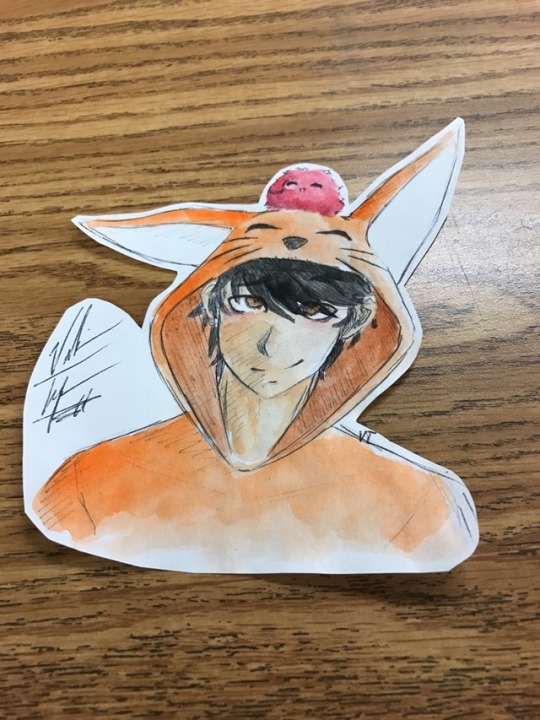
@valerietompson or @valeries-artbook LOVE THIS AND YOU, THANK YOU FAM :3333333 ❤️❤️❤️❤️❤️❤️
0 notes
Text


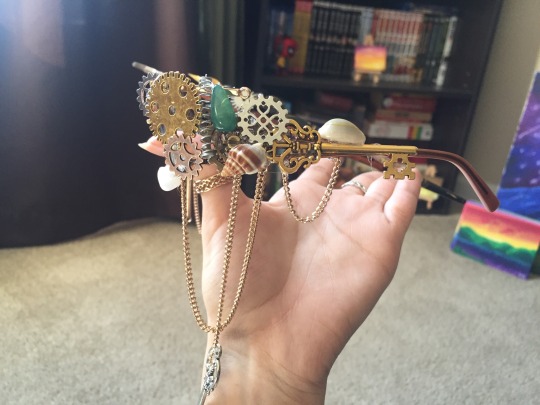
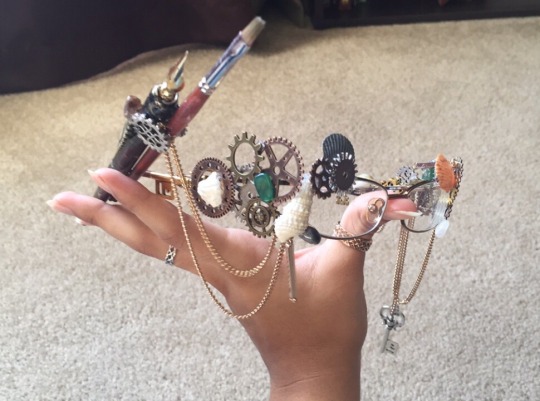

Finals are next week and my final project for my design class was pretty much just “wearable art” with some sort of meaning behind the materials. So, since I had a ton of little gears and keys from the halloween store, I went for ‘unlocking creativity’ and ended up with steampunk glasses.
#SO MUCH HOT GLUE#The instructions were pretty vague#but I cleared it with my professor so i’m good#also had to dig into my rock and shell collections#but I think they turned out pretty neat#they’re an old prescription so I can barely see in them#but they were my only metallic pair#wearable art#eyewear#glasses#steampunk#kinda???#principles of design#my art#valeries artbook#artists on tumblr
15 notes
·
View notes